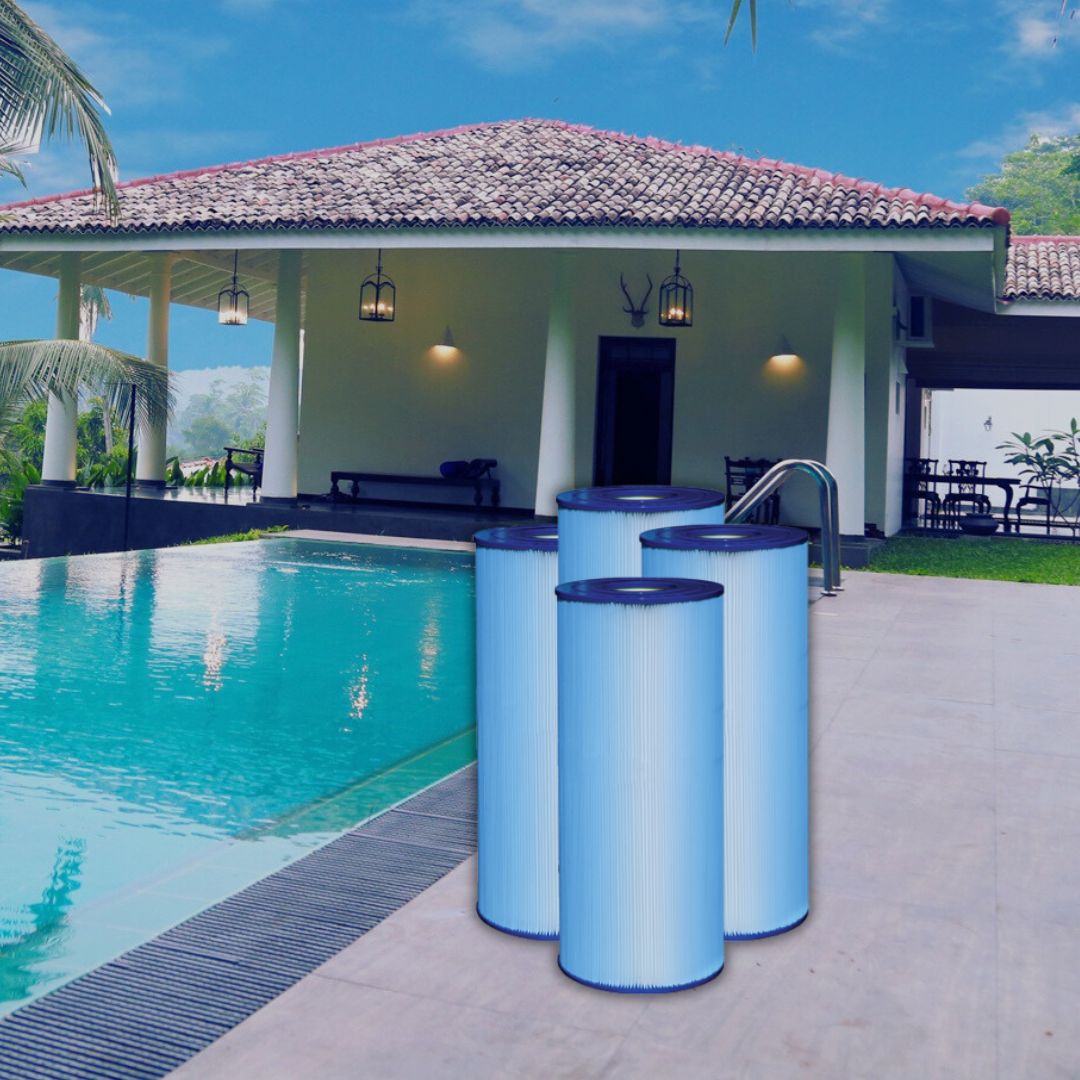A tropical storm or hurricane is an event that pool owners simply cannot control but must prepare for, nonetheless. In the event that severe weather threatens your area, here are some helpful tips to protect your pool and patio during a hurricane.
- Trim nearby trees and bushes
Dead limbs or branches may become airborne and cause damage to your house, pool equipment or screen enclosure. - Store loose items in a safe place
Patio furniture, toys, canvas awnings, patio umbrellas, grills, telescopic poles, and even some pool equipment like automatic pool cleaners can become dangerous projectiles during hurricanes or thunderstorms. Remove all possible unsecured items and store them indoors until the threat passes. Do not throw items into the pool as chemicals could cause damage and removal can be difficult. - Remove solar blankets and covers
Like the items on your patio, blankets and covers should be stored indoors during periods of heavy wind. If you have a portable spa, lock the safety straps on spa covers or remove and store indoors along with any steps or benches. - Remember child safety
If you decide to remove any child safety fencing, do not allow children near the pool after the fence is removed and keep exterior doors locked. - Prevent algae growth
Add an extra dose of All In One Algaecide to prevent a possible algae bloom.
- Prevent electrical problems
If there is a chance the pool motor or other permanently plumbed electrical equipment could be submerged, shut down power at the breaker panel. Sandbag the area around the equipment if possible. Wrap the exposed equipment in a waterproof covering and tie it securely. - Monitor your pool water level
If you expect heavy rain and decide to lower the water level in your pool to help prevent overflowing, do not drain past the bottom of the skimmer. Do not drain the pool completely - an empty pool is subject to “floating” or “popping” out of the ground due to lift pressure from excessive groundwater, and running your pool pump dry can cause serious damage. - Remember gas heater safety
If you have a gas heater, turn off the gas supply at the valve. - Keep your pool water sanitary
Add extra Suncoast Gold™ Liquid Chlorine and circulate the pool as much as possible before the storm, then turn off the power at the circuit breaker. A floating chlorinator will provide sanitization if you cannot run your pump.

Cleaning up after a hurricane
- Remove branches, leaves, mulch, or other foreign matter from the pool before you run the pump to prevent clogging the suction lines. If you have to enter your pool to clear debris, make sure you wear shoes to avoid injury to your feet.
- If you lost power during the storm, remember to reset your circuit breakers and pump timer(s) when electricity is restored, taking care to be sure that everything is dry.
- Remove any covering from the motor or other equipment to allow for airflow. If the pump motor has been submerged, it should be removed for professional cleaning and drying.
- Return the pool water to its proper level. Empty the pump and skimmer baskets and open the appropriate valves to allow water to circulate properly when the pump is turned back on.
- Super-chlorinate the pool and circulate continuously until clarity returns. Clean or backwash filters often, and recharge with new D.E. if applicable. There will be a higher volume of debris and particulate in the water than normal and your filter will need more attention for a few days.
- Bring your pool water to your local Pinch A Penny to have it analyzed and back to the proper pool balance as quickly as possible. After any rain, circulate the pool for at least a couple of hours prior to collecting a sample. This will combine the chemically treated water with the rainwater to ensure an accurate sample.
- Repair or replace any screens, doors, fences or gates used to prevent children from entering your pool unattended.
- When your pool is clean and clear, resume normal operation.
This is only a guide in regards to your pool and patio equipment. For more information on storms and hurricane preparedness, please visit the National Weather Service Information Center.
Share This Post
Related Tags

